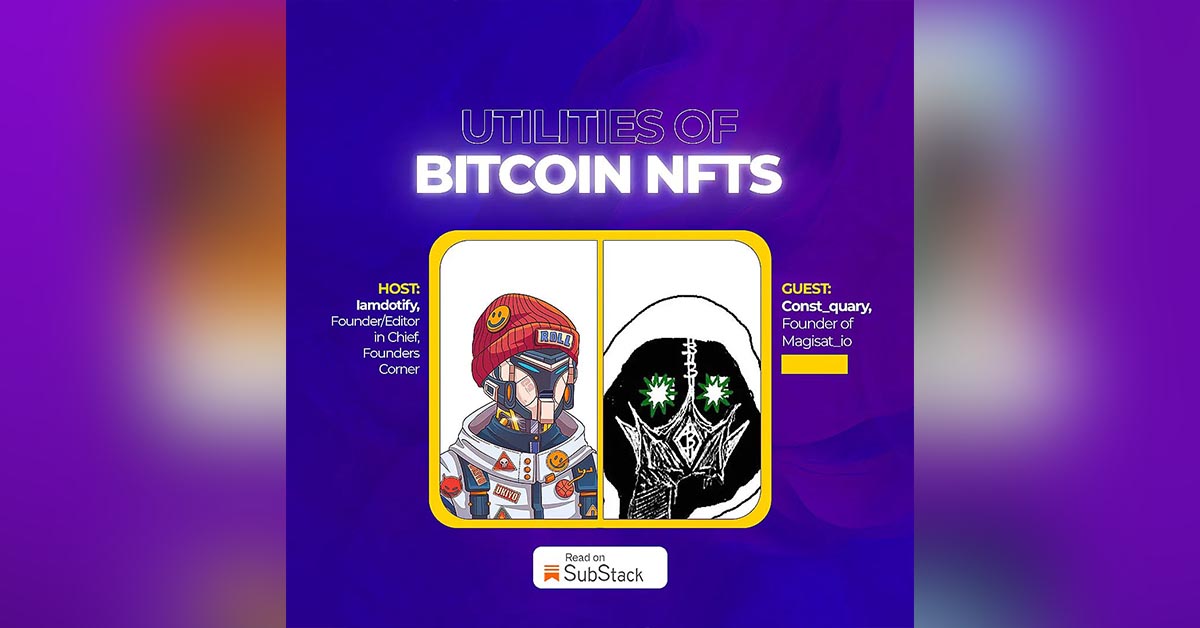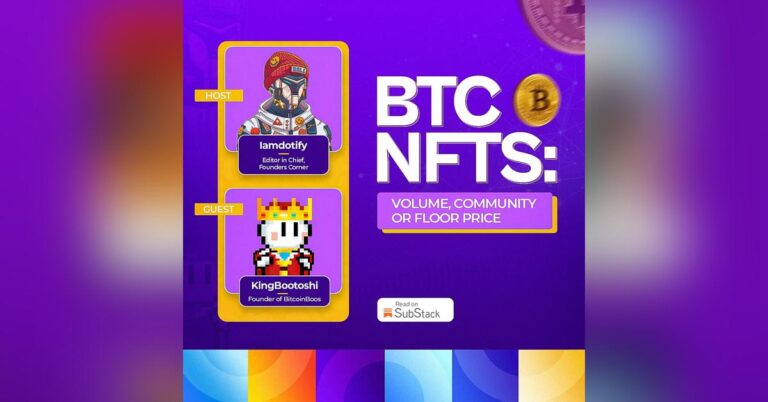Who is Const_Quary, Founder of Magisat?
Read Const Pov about his journey into building Magisat
I’ve been involved in the cryptocurrency space since its early days, back when trades were managed on Excel sheets. Over time, I’ve accumulated a collection of rare Bitcoin sats, having stumbled upon some of them inscribed on pizza sats by sheer luck. This led me to explore the world of rare sats and their categories, sparking a deep curiosity in me.
My journey continued as I delved into ‘hunting’ rare sats, a process involving repetitive deposits and withdrawals on exchanges with the hope of uncovering something extraordinary among the withdrawn Bitcoins. After months of this endeavor, I faced the challenge of selling these sats in the market. Finding buyers for all the sets became a daunting task.
Naturally, the idea of a marketplace where people could conduct these trades in a trustless manner, free from reliance on intermediaries or each other, began to take shape. Leveraging my experience running an outsourcing business in Romania, I assembled a team of blockchain developers. Together, we embarked on building Magisat, driven by a profound sense of the need for a rare sats marketplace on Bitcoin
With support from peers and fellow founders in the space, I gained the courage to launch this venture, making Magisat the largest marketplace for sats in the ordinal space. Slowly but surely, rare sats are gaining momentum as an asset with a compelling narrative, attracting even the more conservative Bitcoin enthusiasts. I firmly believe in the promising future of this asset.
Is there any difference between Sats and ordinals?
It’s essential to distinguish between ordinals, which are Bitcoin-based NFTs, and rare sats. The concept of ordinals began with Casey’s Ordinals Handbook. When it comes to ordinals, you select a specific Satoshi from your wallet and inscribe data onto it. This data could be in the form of a collectible, a JPEG, similar to an NFT on Ethereum. The key difference is that when you inscribe it on Bitcoin, it remains on the chain permanently. You don’t need to worry about the IPFS going offline or off-chain data becoming inaccessible over time.
Now, let’s shift our focus to rare SATs. the rare sats is a concept categorizing satoshis, the smallest units of Bitcoin, into different rarity categories. For example, you might have Satoshis in your wallet that were part of the first Bitcoin transaction, like the famous 10 Bitcoins sent from Satoshi to Hal Finey in block nine. These categories also encompass Satoshis related to significant Bitcoin events, such as the first Satoshi in a mined block, the first Satoshi after a difficulty adjustment, or the first Satoshi post-halving. Some of these are incredibly rare.
It’s important to emphasize the distinction between ordinals and rare sats. Rare sats are not NFTs themselves; they are individual Satoshis with unique historical or rarity significance. These Satoshis then serve as a canvas for your art. You can create an NFT on Bitcoin by using these rare sats as your canvas. It’s akin to drawing on a regular sheet of paper when using common Satoshis or painting on a golden canvas when using a rare and distinctive sat. In this realm, there are two assets involved: the ordinal, which combines the Satoshi with the associated art, and the underlying Satoshi itself. The Satoshi can act both as an investment asset and as a canvas for your ordinal.
Unique Features of Sats and Ordinals
The foremost and critical aspect to understand is the permanence of your data, and it resides on the Bitcoin blockchain. When considering the durability of different blockchains, Bitcoin stands out as a clear frontrunner. Its robust decentralization, backed by a proof-of-work consensus, makes it exceptionally resilient over the long haul. Unlike Ethereum, which relies on a more centralized proof-of-stake model, Bitcoin is better equipped to withstand the test of time, offering a higher level of security.
In contrast, Ethereum-based NFTs are not truly on-chain art. They essentially mint a token from a smart contract, which may point to centralized data hosted elsewhere. Platforms like OpenSea merely render the associated images, but these images aren’t on-chain data. This approach has led to issues where Ethereum NFT holders have encountered ‘404 not found’ errors as the servers hosting their NFT data were taken offline or faced other problems. This practice doesn’t align with the principles cherished by genuine artists who wish for their art to be permanent.
Artists who value the integrity and longevity of their work prefer their creations to be eternally preserved. The Bitcoin Network is unparalleled in offering this level of permanence. It ensures that your art remains part of the immutable blockchain, assuring artists that their creations won’t simply vanish due to server shutdowns or the discontinuation of IPFS support.
This fundamental distinction sats Bitcoin ordinals apart from Ethereum NFTs, making Bitcoin the prime choice for those who seek enduring art.
Opportunities Available In Bitcoin Ecosystem
In every bull market, a specific asset takes the spotlight, and I believe it’s Bitcoin’s time to shine once more. In 2017, it was ICOs, and 2021 witnessed the NFT craze. Looking ahead to the next Bull Run, I foresee a shift in perspective. People will come to realize that we don’t require a plethora of alternative coins and blockchains, and instead, we’ll return to the prominent ones, particularly Bitcoin.
Several factors contribute to this resurgence. Firstly, Bitcoin is expanding with the development of DeFi solutions directly on the network. Furthermore, marketplaces are gravitating back to Bitcoin, and the emergence of rare Satoshis introduces a compelling investment avenue. Additionally, ordinals bring the allure of permanent, on-chain art.
This convergence of factors sets the stage for remarkable opportunities within the Bitcoin ecosystem. We can anticipate substantial movements soon. Founders like yourself in the Bitcoin ecosystem are likely to witness significant gains.
The time has come for people to recognize the inherent value of decentralization. Bitcoin’s censorship resistance, especially within the broader political landscape, addresses a genuine need in our world. This understanding will prompt a migration back to the most robust blockchain.
In this transition, investment opportunities abound. Despite cycles of hype and FUD, a deeper examination of the fundamentals and value propositions of various chains reveals that none surpasses Bitcoin. Whether one is involved in DeFi or NFTs, Bitcoin, as the ‘mother chain,’ offers the most compelling value proposition.
Hence, activities and products on Bitcoin, in my view, carry the most enduring value and resilience over time.



